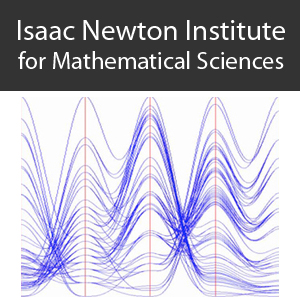Data, models, inference and computation for dynamic cellular networks in systems biology
Duration: 22 mins 45 secs
Share this media item:
Embed this media item:
Embed this media item:
About this item

| Description: |
West, M (Duke)
Tuesday 24 June 2008, 14:20-14:40 Future Directions in High-Dimensional Data Analysis |
|---|
| Created: | 2008-07-08 10:05 | ||
|---|---|---|---|
| Collection: | Statistical Theory and Methods for Complex, High-Dimensional Data | ||
| Publisher: | Isaac Newton Institute | ||
| Copyright: | West, M | ||
| Language: | eng (English) | ||
| Distribution: |
World
|
||
| Credits: |
|
||
| Explicit content: | No | ||
| Aspect Ratio: | 4:3 | ||
| Screencast: | No | ||
| Bumper: | /sms-ingest/static/new-4x3-bumper.dv | ||
| Trailer: | /sms-ingest/static/new-4x3-trailer.dv | ||
| Abstract: | Advances in bioengineering technologies are generating the ability to measure increasingly high-resolution, dynamic data on complex cellular networks at multiple biological and temporal scales. Single-cell molecular studies, in which data is generated on the levels of expression of a small number of proteins within individual cells over time using time-lapse fluorescent microscopy, is one critical emerging area. Single cell experiments have potential to develop centrally in both mechanistic studies of natural biological systems as well as via synthetic biology -- the latter involving engineering of small cellular networks with well-defined function, so providing opportunity for controlled experimentation and bionetwork design. There is a substantial lag, however, in the ability to integrate, understand and utilize data generated from single-cell fluorescent microscopy studies. I will highlight aspects of this area from the perspective of our work in single cell studies in synthetic bacterial systems that emulate key aspects of mammalian gene networks central to all human cancers. I will touch on:
(a) DATA: Raw data come as movies of colonies of cells developing through time, with a need for imaging methods to estimate cell-specific levels of fluorescence measuring mRNA levels of one or several tagged genes within each cell. This is complicated by the progression of cells through multiple cell divisions that raises questions of tracking the lineages of individual cells over time. (b) MODELS: In the context of our synthetic gene networks engineered into bacterial cells, we have developed discrete-time statistical dynamic models inspired by basic biochemical network modelling of the stochastic regulatory gene network. These models allow the incorporation of multiple components of noise that is "intrinsic" to biological networks as well as approximation and measurement errors, and provide the opportunity to formally evaluate the capacity of single cell data to inform on biochemical parameters and "recover" network structure in contexts of contaminating noise. (c) INFERENCE & COMPUTATION: Our approaches to model fitting have developed Bayesian methods for inference in non-linear time series. This involves MCMC methods that impute parameter values coupled with novel, effective Metropolis methods for what can be very high-dimensional latent states representing the unobserved levels of mRNA or proteins on nodes in the network as well as contributions from "missing" nodes. This work is collaborative with Jarad Niemi and Quanli wang (Statistical Science at Duke), Lingchong You and Chee-Meng Tan (Bioengineering at Duke). |
|---|---|
Available Formats
| Format | Quality | Bitrate | Size | |||
|---|---|---|---|---|---|---|
| MPEG-4 Video | 480x360 | 1.84 Mbits/sec | 314.46 MB | View | Download | |
| WebM | 480x360 | 498.11 kbits/sec | 83.06 MB | View | Download | |
| Flash Video | 480x360 | 804.33 kbits/sec | 134.61 MB | View | Download | |
| iPod Video | 480x360 | 504.9 kbits/sec | 84.50 MB | View | Download | |
| QuickTime | 384x288 | 847.21 kbits/sec | 141.79 MB | View | Download | |
| MP3 | 44100 Hz | 125.01 kbits/sec | 20.71 MB | Listen | Download | |
| Auto * | (Allows browser to choose a format it supports) | |||||

